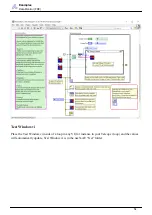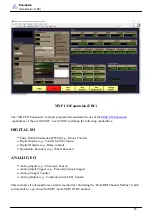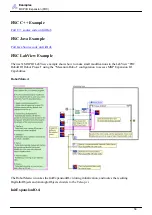
Guidance
Selecting an Interface
Interface
Type
Speed
Latency
Type
Cable distance
Max Update
Rate
SPI
2 mbps
<1ms
Register-based
<1 meter
200
I2C
400 kbps
~10ms
Register-based
1 meter
200
USB
12 mbps
1ms
Streaming
6 meters
200
Recommendations
Based upon the above, the following recommendations are provided for selecting the best navX-MXP
communications interface:
– If mounting the navX-sensor directly on the RoboRIO, the SPI interface is preferred for it’s high speed
and low latency.
– If mounting the navX-sensor separately from the RoboRIO using an extension cable and if MXP IO
support is desired, run SPI at a lower speed. The I2C interface is also a reasonable option.
– If mounting the navX-sensor separately from the RoboRIO, and MXP IO support is not desired and
only Processed or Raw Data (not both) is needed, USB may be used. This configuration is useful when
using the navX-sensor magnetometer data, since it makes it possible to mount the navX-sensor farther
away from motors. This configuration is also useful when accessing navX-sensor data from a separate
processor, such as a PC or a separate video processor. However, please note that in certain cases when
other USB devices (e..g, cameras) are connected to the same RoboRIO USB bus, and are used
simultaneously with navX-sensor, in certain cases the USB communication is interrupted. For this
reason, USB is not recommended on the RoboRIO, especially if you are connecting with other USB
devices on the same USB bus.
Gyro/Accelerometer Calibration
Gyro/Accelerometer Calibration
navX-sensors require calibration in order to yield optimal results. Although this calibration occurs
automatically, we highly recommend taking the time to understand this calibration process – successful
calibration is vital to ensure optimal performance.
Accurate Gyroscope Calibration is crucial in order to yield valid yaw angles. Although this process
occurs automatically, understanding how it works is required to obtain the best results.
If you are tempted to ignore this information, please read the section entitled “The Importance of
Stillness” at the end of this page.
Calibration Process
68






























